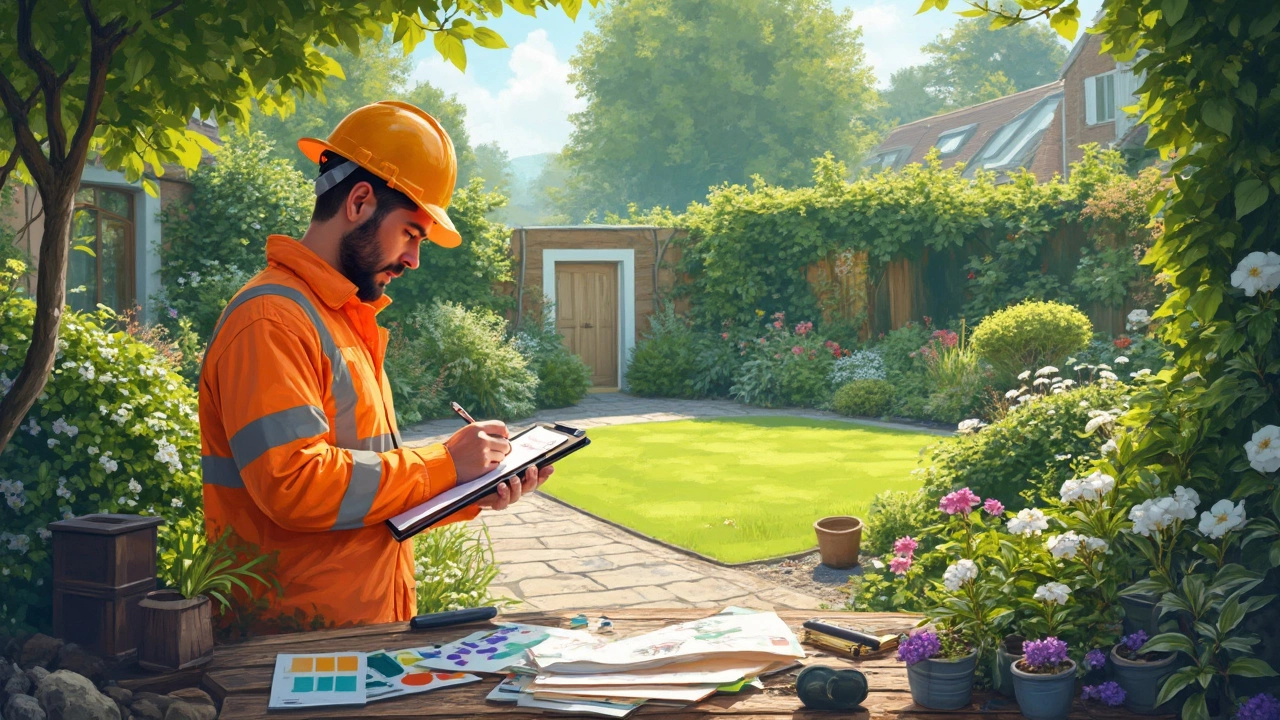Yard Maintenance Made Easy – Simple Steps for a Clean, Healthy Outdoor Space
Whether you’re planning a new patio, fixing a fence, or just want a place to relax, a well‑kept yard is the foundation. You don’t need a landscaping degree to keep things looking good – a few daily habits and a seasonal checklist do the trick.
Everyday Yard Basics
Start by picking up litter and debris as soon as you see it. A quick sweep of the driveway, a handful of leaves from the garden beds, and you’ve already prevented mold and pests from setting up shop. Next, give the grass a light trim once a week during the growing season. Cutting too short stresses the roots; aim for about 2‑3 inches to keep a thick, healthy turf.
Watering is another daily task that’s easy to get right. Early morning is best – the water soaks in before the heat evaporates, and the leaves dry faster, reducing fungal risk. A rule of thumb: about one inch of water per week, either from rain or your hose.
Don’t forget the hardscapes. A broom or leaf blower clears driveways, pathways, and patio slabs. If you notice oil spots or moss, a simple scrub with a garden hose and a mild detergent restores grip and looks.
Seasonal Maintenance Checklist
Spring kicks off with a soil test. A quick kit tells you if the pH is off, and you can add lime (yes, the same limestone we supply) to bring it back to neutral. This step helps grass seed germinate faster and keeps garden plants thriving.
When the snow melts, check for drainage problems. Standing water around the foundation can cause cracks over time. If water pools, consider adding a French drain or re‑grading the soil away from the house – both are affordable fixes that protect your structure.
Summer brings weeds. Pull them by the root, not just the tops, and apply a thin layer of mulch to suppress new growth. Mulch also retains moisture, meaning you’ll water less.
Fall is the time to aerate the lawn and spread a thin layer of compost or well‑rotted leaf mould. This improves soil structure and sets the stage for a strong spring lawn. Finally, prune dead branches and trim back overgrown bushes to keep the yard tidy and improve airflow, which reduces disease.
Across all seasons, keep an eye on the fence and gate hinges. A little oil or silicone spray stops squeaks and rust, saving you from a full replacement later. And if you’re ever unsure whether a crack in the driveway or a dip in the garden is just cosmetic, call a local professional – a quick inspection can catch costly foundation issues before they spread.
By sticking to these simple routines, you’ll enjoy a yard that looks great, stays safe, and supports any future building projects you have in mind. No fancy tools, no huge budget – just consistent care and a bit of common sense.
What Does a Landscaper Actually Do? Real Job Duties, Skills, and Insider Tips

Unlock the real job of a landscaper: from design to planting and hardscape magic, with expert tips for your outdoor space. Know what to expect and how to hire smart.
read moreLawn Mowing Prices: What Most People Actually Pay

Ever wondered what people charge to mow a lawn? This article breaks down real numbers, key factors that change the price, and whether hiring a pro or sticking with a neighbor is worth it. Plus, you'll get tips to land a fair deal and avoid hidden fees. No confusing charts—just straightforward info you can use right away. Read on before you next cut a check for yard work.
read more



